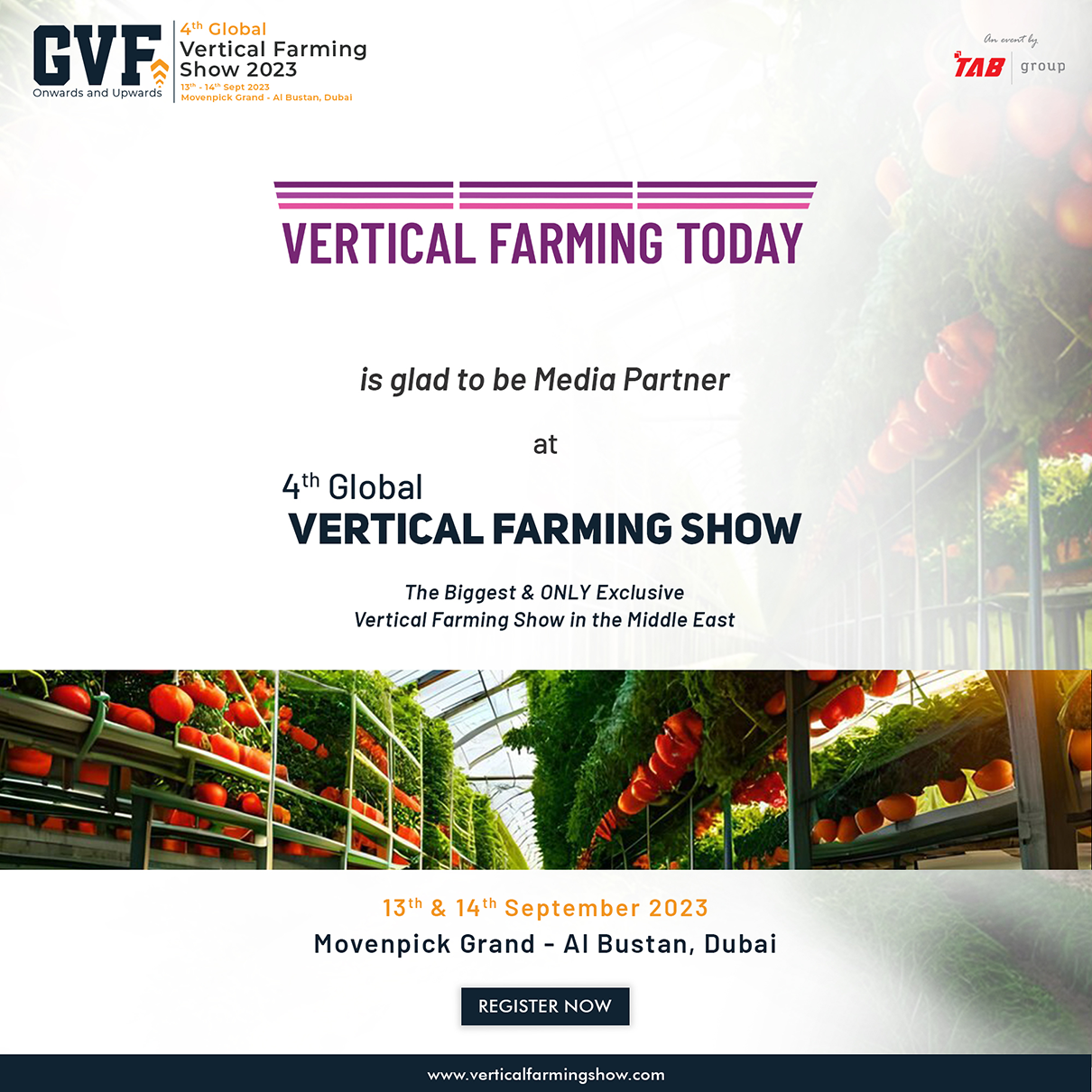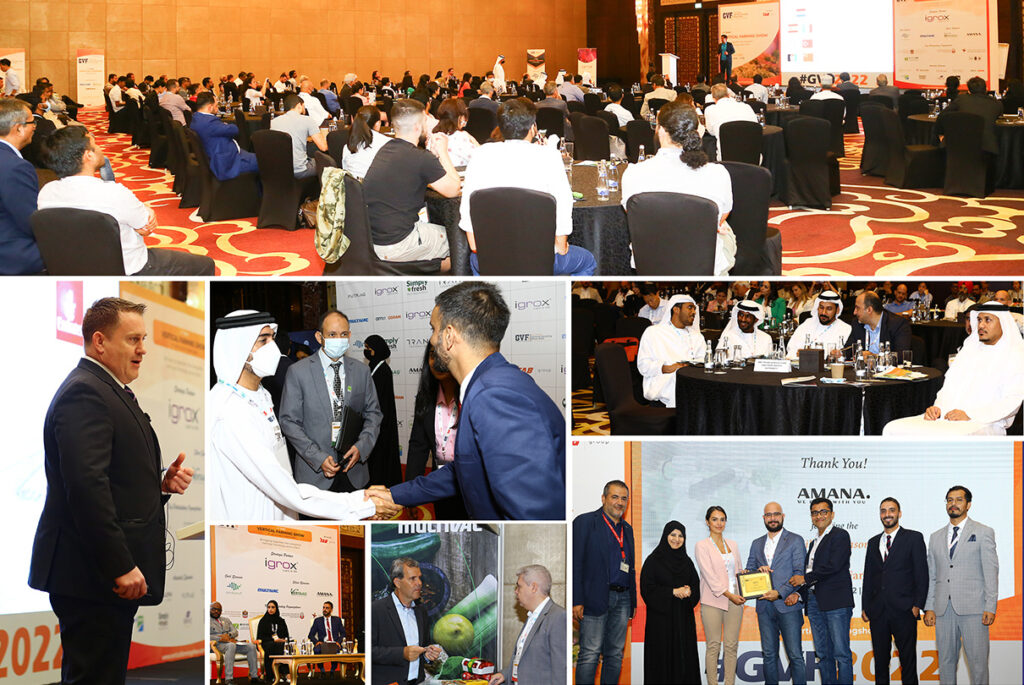The vertical farming sector in the Middle East is booming. The unique challenges created by extreme temperatures in the region makes the solution an attractive method to increase food production, and the United Arab Emirates (UAE), Saudi Arabia and Qatar have all embraced vertical farming in some capacity to date.
In Dubai, the world’s largest vertical farm was established last year. Bustanica’s indoor facility covers 330,000 square feet and the farm has the capacity to produce one million kilograms of salad crops per year.
As a further sign of support for the growing sector, the fourth Global Vertical Farming Show is set to take place in Dubai this year from September 13th-14th. As proud media partners of this prestigious event, we spoke to Tahir A. Bari, CEO and Managing Director of the show’s organiser, TAB Group, about the region’s investment in vertical farming, the growth of the sector to date and what attendees of the show can expect.
Could you tell us about this year’s Global Vertical Farming Show?
We have hosted this event at different places – including remotely during COVID – but the Middle East has been a fantastic venue for this event. The idea of the show is to bring together the complete vertical farming value chain to discuss potential collaborations, new technologies and new research.
I believe there are very few events that are fully dedicated to vertical farming because, by and large, it’s still a new concept in many parts of the world and we are glad we are one of the first movers in this industry.
It’s exciting and very interesting to put this event together, and we’ve had a fantastic response so far for all our events in vertical farming.
What types of people attend the show and where do they come from?
This year’s show will have global participation from over 35 countries. We expect around 5,000 targeted professionals to attend who represent or are related to the vertical farming industry. For the last show, we had about 3,700 attendees over two days.
The Middle East is the main chunk of where the attendees come from but on top of that, we will see a lot of participation from Europe, such as the Netherlands, Italy, UK and Germany, and from the US and Canada, where there is a lot of innovation happening in the vertical farming domain. We will have attendees from Asian countries too like India, Singapore and South Korea.
The show is a great opportunity to meet with likeminded people, because we understand that this is not a very huge industry and there are still so many people who are not even aware about what vertical farming really is.
Our idea is to bring the complete value chain together. We’ll have vertical farm owners and relevant major companies in the sector that are operational right now in the Middle East and other parts of the world.
We have solution providers from energy, technology and consulting companies who have an interest in expanding their business and meeting their target audience. Attendees also include academics and researchers who have done research on the new technologies and innovations in this field, and policymakers in the government
If somebody is interested in doing business in the Middle East in this segment, it makes sense for them to hear directly what the government is doing right now and what their policy is for the next two, five or even ten years down the line. It helps them to plan their business well in advance based on what is available in the market.
What is the vertical farming market like in the Middle East and how has it grown?
It’s amazing – firstly because, by default, it’s something that is really needed in the region. The climate is hot so there’s always a scarcity of water, so vertical farming had to come in naturally.
Secondly, the government in UAE are putting in a huge amount of effort to support this industry with new policies, and to encourage people to invest and work in this industry.
When we started the show in 2019, there were around 2000 vertical farms in the region. Today, there are more than 10,000 farms.
The best part is that it’s still developing. People are getting interested in this sector and we are seeing new farms and new investments taking place every day. It’s really amazing how we’re seeing the industry growing in front of our eyes.
What can vertical farming in the Middle East offer those struggling in the other geographical markets?
It is about the demand and also the natural need. For example, if I consider a country like India, people can still afford to have large amounts of land and grow what they need on it. If there’s a vertical farm there, it’s by choice. But in the Middle East, you have to have this. There is still a lot of scope for new projects to come up in the region.
The government are very serious about this particular market so they are making new policies and investments, creating an environment that is investment friendly in this specific segment. I think that plays an important role. The strong market in the Middle East is so lucrative for companies to come and set up their businesses there.
What are your predictions for the global vertical farming market over the next five years?
For the Middle East, we believe that vertical farming is something that has now taken off the pressure. It is definitely on the path of growth and adjusts as elements change – for example, the cost of energy and the type of LEDs that people are using, or the changes in the automation that is taking place.
The new technology that is coming in is more cost effective. It brings down the overall cost of production and it will become cheaper for people to consume those products, which obviously makes this industry stronger and stronger by the day.
We’re expecting this industry to grow at least by 27% CAGR, which is a very good figure. By 2030, we’re looking at the industry reaching near $30 billion.



